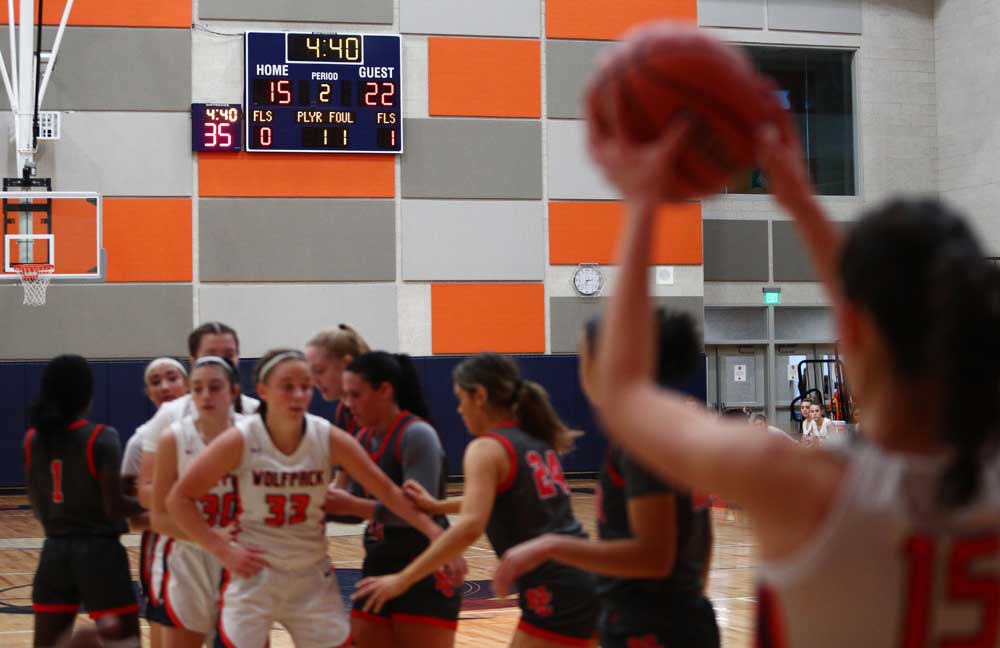Shot clock and updated foul rules have arrived in Oregon high school basketball
Published 6:07 pm Tuesday, December 19, 2023

- A shot clock is seen next to the scoreboard as Caldera inbounds the ball during a girls basketball game against North Eugene on Saturday at Caldera High School in Bend.
Two major changes have taken effect in boys and girls high school basketball this season that bring a slightly different feel on the court.
First, there is now a 35-second shot clock, which was unanimously passed by the Oregon School Activities Association in September. And second, an elimination of one-and-one free throws, instituted by the the National Federation of State High School Associations Basketball Rules Committee.
Trending
Oregon is one of 27 states to use a 30- or 35-second shot clock in some capacity, according to NFHS.
“The product (the shot clock) is putting out is an improvement,” said Summit boys basketball coach Jon Frazier. “It really doesn’t come into play very often. I think those last two, three minutes of the half and end of the game are way more exciting.”
With the up-and-down pace at which the high school game is now often played, the shot clock comes into play only a couple of times during a game. It is really felt in the final minutes of the quarters when teams can no longer stall with the ball for long stretches without taking a shot.
“In the past, if you have a good guard or two, and you have a lead, the game was pretty much over,” Frazier said. “You can work really hard to make a stop. It is a step in the right direction and leads to more exciting end-of-game situations.”
Added Summit senior Pearson Carmichael: “Offensively, we try to score fast. Defensively, we can play a little more aggressive and try to turn the ball over. It is definitely a big change.”
There have also been changes to the fouling procedures, which is a little more obvious during games.
Trending
The NFSH Basketball Rules Committee made a change to how common fouls are recorded.
The new guidelines changed the team fouls threshold to send teams into the bonus (two free throws) and eliminated the one-and-one free throw scenarios.
Once a team commits five fouls in a quarter, the opposing team will be put in the double-bonus and given two free throws for each infraction.
The team fouls reset after each quarter, which was not the case under the previous rules.
“We felt like the five-foul rule would have more of an impact on how we play,” Frazier said. “That has been the case so far. It allows you to play more physically than in years past.”
This is different from previous years when once a team reached seven fouls in a half, the opposing team would shoot a one-and-one free throw (one free throw, and if made, a second free throw). Then once a team reached 10 fouls the opposing team would get to shoot two free throws (double-bonus).
“The shot clock to me hasn’t really been a factor for us,” said Hadley Williams, a senior on the Caldera girls basketball team.
“But we have put teams to the free throw line a lot with fouls. That has bit us in the butt a couple of times.”
“The no one-and-one is rough,” Carmichael added. “But, I like that we can play more aggressively. It brings up the intensity both offensively and defensively.”








